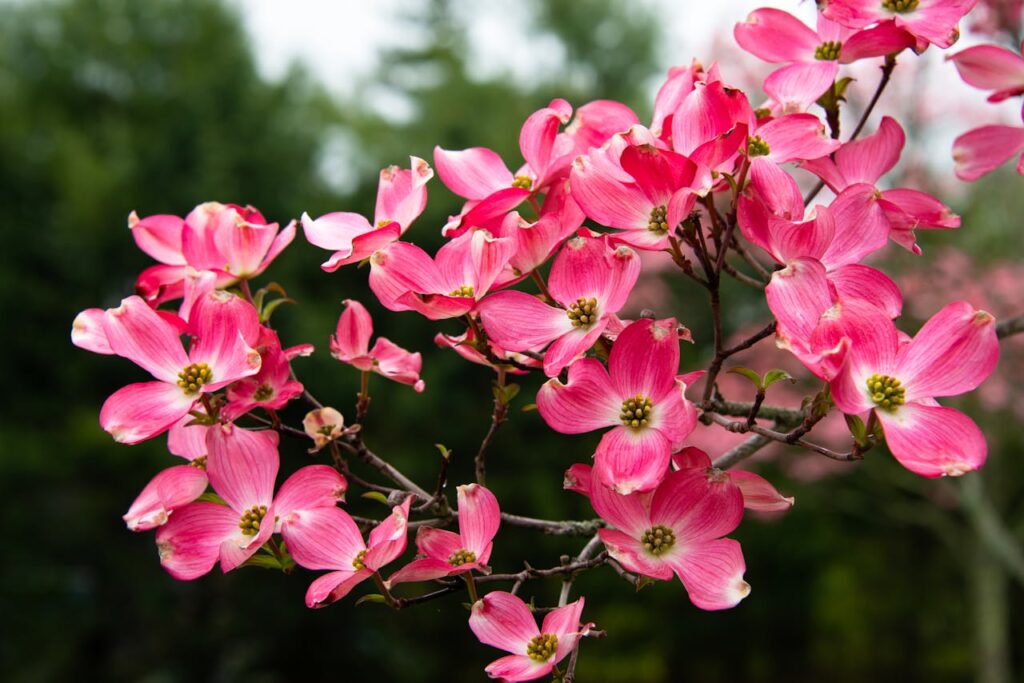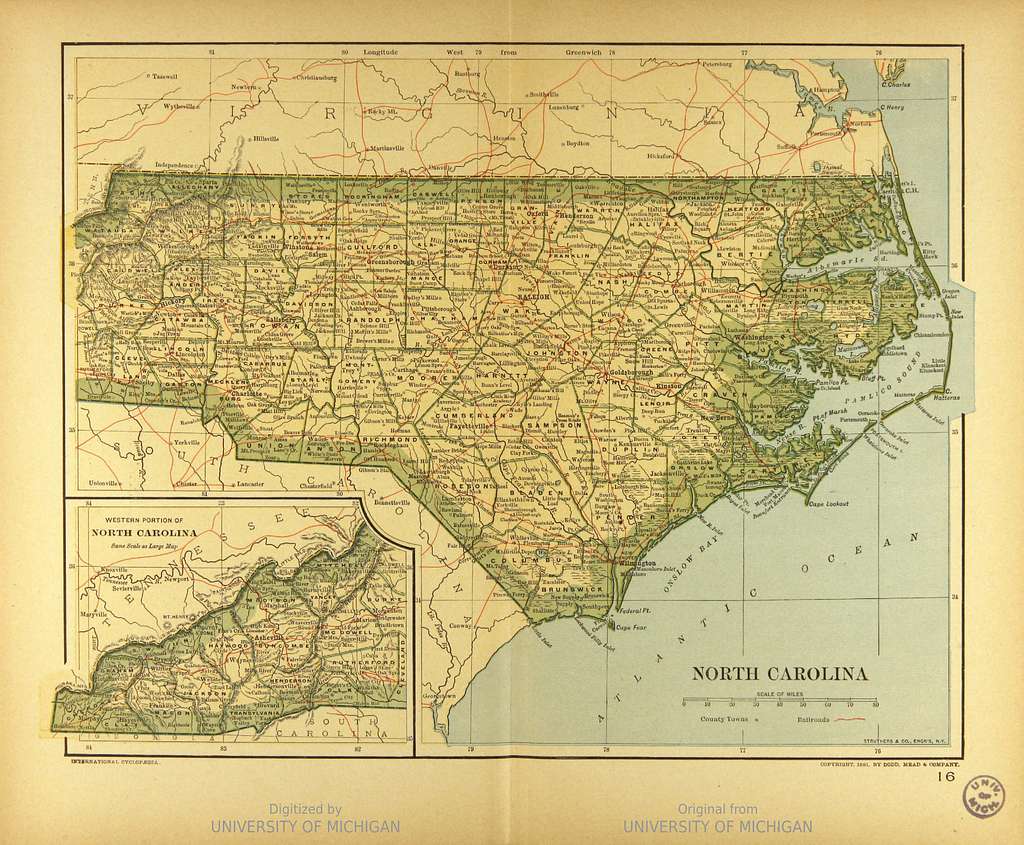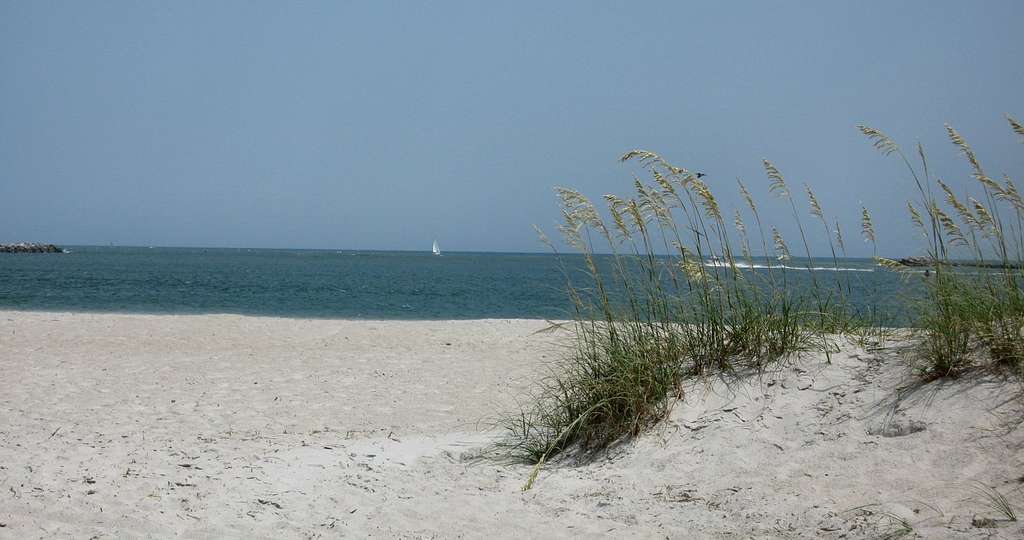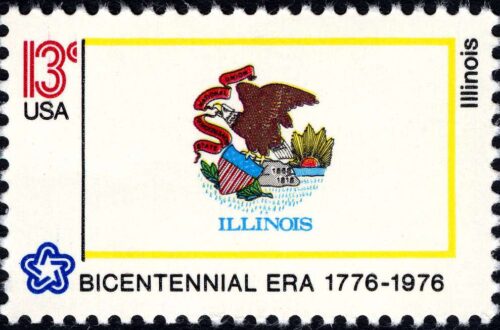
49 Fascinating Facts About North Carolina You Need to Know
Facts About North Carolina
In the heart of the southeastern United States, a state brimming with history, culture, and natural beauty can be found. Known to many as the Tar Heel State, North Carolina offers a unique blend of coastal charm, mountain majesty, and vibrant urban life. From its role in early American history to its influence on music, sports, and the arts, this state holds countless stories worth exploring. While much has been written, a deeper look into the facts about North Carolina reveals surprising and remarkable details that many have yet to uncover.
Interestingly, the state’s history stretches far beyond the founding of the nation itself.
Before the thirteen colonies emerged, the shores of Roanoke Island witnessed the establishment of the first colony of English settlers in the New World—an endeavor that would spark centuries of curiosity due to its mysterious disappearance.
Furthermore, the region’s geography is as diverse as its history. With the Atlantic Ocean to the east, the Appalachian Mountains to the west, and rolling piedmont in between.
Historical Facts About North Carolina

Early Settlements and the Lost Colony
To understand the depth of North Carolina’s history, one must first consider Roanoke Island. It was here in 1587 that more than 100 settlers arrived from England, hoping to build a thriving community.
However, when a supply ship returned three years later, not a single inhabitant was found, and the word “CROATOAN” was carved into a post. The disappearance remains one of the greatest unsolved mysteries in North America.
Additionally, North Carolina would later become central to colonial life. Playing an important role in the Revolutionary War and shaping the early culture of the United States.
Many towns still preserve architecture and layouts from the 18th and 19th centuries, creating a living museum for history lovers.
Notable Firsts and Achievements
Remarkably, Kitty Hawk, located along the Outer Banks, became the site of the Wright brothers’ first powered flight in 1903.
This achievement not only transformed transportation but also cemented the state’s place in global innovation history.
Moreover, the region around Little Meadow Creek is recognized for being the first location where gold coins were minted in the United States. Following the nation’s first documented gold discovery in 1799.
Cultural and Musical Heritage
Over time, the Tar Heel State has produced a remarkable number of influential musicians. Nina Simone, celebrated for her soulful voice and activism, was born in Tryon.
The pop-rock success of Chris Daughtry, the powerhouse vocals of Fantasia Barrino, and the enduring popularity of Clay Aiken further showcase the state’s contribution to music.
Additionally, Ben E. King, famous for “Stand By Me,” also has roots in North Carolina.
Geographical Wonders and Natural Beauty
To the east, the Atlantic Ocean provides more than 300 miles of coastline. With beaches attracting millions of visitors each year.
The Outer Banks, Cape Hatteras, and Cape Lookout stand out as treasured coastal areas. In the central region, the piedmont is dotted with charming cities. Such as Chapel Hill, known for its university and cultural scene.
Moving westward, the Blue Ridge and Great Smoky Mountains offer hiking, scenic drives, and breathtaking views that reach above sea level in some of the tallest peaks east of the Mississippi.
Facts About North Carolina

State Symbols and Their Meanings
Interestingly, every state in the United States has symbols that represent its heritage, and North Carolina is no exception.
The state flower, the flowering dogwood, blooms each spring, painting landscapes with white and pink blossoms.
These blooms have long been admired not only for their beauty but also for their resilience. In addition, longleaf pines were once abundant across the state, providing valuable timber. Plus resin that played a significant role in local economies.
Furthermore, the state bird—the cardinal—adds a bright splash of red to the woodlands. While the honeybee is recognized as the state insect for its contribution to agriculture. Even the state motto, “Esse Quam Videri” (To be, rather than to seem), reflects the honest and steadfast character for which North Carolinians are known.
Architectural Marvels and Historic Sites
The Grandeur of Biltmore Estate
Without question, the Biltmore Estate in Asheville stands as one of the most impressive landmarks in the nation.
Completed in 1895 by George Washington Vanderbilt II, this 250-room mansion is the largest privately owned home in the United States.
Spread over 8,000 acres, the property includes elaborate gardens, a winery, and breathtaking views of the surrounding Blue Ridge Mountains. Visitors often find themselves awed by its Gilded Age elegance and meticulously preserved architecture.
Chapel Hill and Cultural Identity
In the Piedmont region, Chapel Hill stands out not only as the home of the University of North Carolina but also as a vibrant cultural hub.
Art galleries, historic districts, and live music venues are woven into daily life here. Because of its deep-rooted traditions and academic influence, the city has helped shape the state’s identity for generations.
Sporting Legacy and Famous Figures
The Tar Heel State has a strong sporting culture. In fact, Babe Ruth hit his first professional home run in Fayetteville in 1914, marking the beginning of an illustrious baseball career.
Beyond baseball, basketball has become almost a way of life. College rivalries, especially between the University of North Carolina and Duke University, draw nationwide attention every season.
Moreover, the state’s connection to notable personalities extends far beyond sports. Singers like Fantasia Barrino and Clay Aiken rose to fame on national television, while Chris Daughtry gained recognition for his rock music.
These individuals highlight the state’s consistent production of talent across genres and industries.
Coastal Treasures and Maritime History

Along the coast, the Atlantic Ocean has shaped life for centuries. Fishing communities, historic lighthouses, and barrier islands all play a role in telling the story of North Carolina.
Places such as Cape Hatteras National Seashore and Ocracoke Island provide not just recreation but also glimpses into maritime history.
Pirate legends, shipwrecks, and stories of early explorers add depth to the rich tapestry of the state’s coastal heritage.
Economic History and the Gold Rush
Surprisingly, the first significant gold discovery in the United States did not happen in California—it occurred in North Carolina.
In 1799, at Little Meadow Creek, a 12-year-old boy named Conrad Reed found a 17-pound gold nugget. At first, it was used as a doorstop in the family home until a jeweler recognized its true value.
This find sparked the first American gold rush, leading to the establishment of the Charlotte Mint, where the nation’s first official gold coins were struck.
Because of this early mining boom, the state became an economic hub in the early 19th century. Even after gold production declined, the region’s fertile land and strategic location supported industries ranging from tobacco to textiles.
As the years passed, advancements in manufacturing, banking, and technology further cemented North Carolina’s role in the nation’s economy.
Modern Industries and Growth
Today, the Tar Heel State is known for its economic diversity. Agriculture still thrives, with sweet potatoes, poultry, and hog farming playing significant roles.
However, technology, finance, and biotechnology have emerged as major drivers of growth.
The Research Triangle Park, situated between Raleigh, Durham, and Chapel Hill, is one of the largest research centers in North America, attracting global companies and skilled professionals.
Additionally, tourism contributes billions to the economy each year. Visitors are drawn to both natural wonders and cultural attractions, from the Biltmore Estate to the windswept beaches along the Atlantic Ocean.
Little-Known Facts About North Carolina

While many know about its coastal beauty and mountain charm, there are some facts about North Carolina that remain less publicized:
- The state is the largest producer of sweet potatoes in the United States.
- The Venus flytrap, a carnivorous plant, is native only to North and South Carolina.
- Sea level rise poses a growing challenge to coastal communities, prompting ongoing conservation efforts.
- The state flower, the flowering dogwood, has been celebrated in festivals and local art for decades.
- Roanoke Island still attracts historians and tourists who are fascinated by the mystery of the first colony of English settlers.
A Blend of Past and Present
Because North Carolina seamlessly weaves together its history with modern innovation, it remains one of the most dynamic states in the country.
Coastal fishing villages still operate much as they did a century ago, yet only a few hours inland, bustling cities offer cutting-edge technology and world-class universities. This balance appeals not only to residents but also to those considering relocation.
Furthermore, its role in American music, from the soulful sound of Nina Simone to the rock edge of Chris Daughtry, continues to inspire.
Combined with sporting achievements, architectural wonders, and breathtaking natural scenery, these elements create a rich cultural identity.
Notable Cultural Events and Festivals
Throughout the year, North Carolina celebrates its heritage with a variety of festivals and cultural gatherings.
Each spring, the Dogwood Festival honors the state flower, the flowering dogwood, with parades, music, and art displays.
In coastal towns, seafood festivals draw visitors eager to sample fresh catches from the Atlantic Ocean.
Equally important is the North Carolina Azalea Festival in Wilmington, which combines floral beauty with concerts, garden tours, and a historic parade.
Meanwhile, the Mountain State Fair in Fletcher showcases the agricultural traditions of the western region, featuring livestock, crafts, and regional music.
Because of its musical legacy, the state also hosts events celebrating jazz, gospel, and bluegrass.
These festivals often feature performances by both local artists and internationally recognized names, reinforcing the state’s role as a cultural hub.
Famous Residents Who Shaped the State’s Identity

Over the decades, the Tar Heel State has been home to individuals whose influence extends far beyond its borders.
Legendary musician Nina Simone, born in Tryon, used her artistry to inspire and advocate for civil rights.
In the realm of popular music, Chris Daughtry gained national fame for his powerful rock vocals, while Fantasia Barrino and Clay Aiken rose to prominence on televised singing competitions.
Additionally, Ben E. King, whose timeless hit “Stand By Me” remains beloved, had connections to North Carolina.
These artists join a long list of figures who have contributed to the state’s musical heritage.
Beyond music, historical icons like the Wright brothers, who chose Kitty Hawk for their groundbreaking first flight, further enrich the state’s reputation for innovation and achievement.
Climate and Geography
Spanning from the mountains to the coast, North Carolina enjoys a varied climate. Summers along the coast are warm and humid, while the mountains offer cooler temperatures even in July.
Winters are generally mild in the piedmont region, though snowfall is common at higher elevations.
Because of this geographic diversity, outdoor recreation opportunities are plentiful year-round. The beaches of the Outer Banks provide perfect conditions for surfing and fishing, while the Blue Ridge Parkway invites scenic drives and hiking through breathtaking landscapes.
The state’s highest point, Mount Mitchell, rises over 6,600 feet above sea level, making it the tallest peak east of the Mississippi River.
If you have some free time, it might be helpful to check out this article Interesting Facts About Mississippi (The Best 50)
Snippet-Ready Summary: Key Facts About North Carolina
North Carolina, located in the southeastern United States, is known for its role in early American history, from the mystery of Roanoke Island to the Wright brothers’ first flight in Kitty Hawk.
Nicknamed the Tar Heel State, it boasts the Biltmore Estate, over 300 miles of Atlantic Ocean coastline, and a legacy of musical talent including Nina Simone and Chris Daughtry. It was also the site of the nation’s first gold discovery at Little Meadow Creek.

Historical Connections with South Carolina
Due to their shared border, North Carolina and South Carolina have intertwined histories that date back to colonial times.
Originally, both were part of the Province of Carolina, a territory granted by King Charles II in the 1600s.
Eventually, political and economic differences led to the formal division into two separate colonies in 1712. Despite the split, trade routes, cultural traditions, and family ties continued to connect the two states for centuries.
Moreover, during the Revolutionary War, both states contributed significantly to the fight for independence.
Cross-border skirmishes and supply networks were common, and the geography of the Carolinas played an important role in military strategy. Even today, shared industries such as agriculture, textiles, and tourism create a sense of regional unity.
Natural Landmarks and Outdoor Attractions
Because North Carolina stretches from the mountains to the coast, its natural attractions are incredibly diverse.
In the western part of the state, the Great Smoky Mountains National Park and Pisgah National Forest offer scenic trails, waterfalls, and wildlife viewing opportunities.
Mount Mitchell State Park draws hikers eager to stand on the highest point in the eastern United States, towering above sea level.
In contrast, the eastern coast is defined by the Atlantic Ocean, with the Outer Banks forming a barrier against the waves.
Cape Hatteras National Seashore is famous for its historic lighthouse, shifting sands, and abundant marine life.
Roanoke Island, nestled between the mainland and the barrier islands, offers both historical reenactments and serene landscapes for visitors to enjoy.
Economic Evolution and Innovation
Over the decades, North Carolina has adapted to shifting economic conditions. While farming and manufacturing once dominated, the state now thrives in finance, biotechnology, and renewable energy.
Cities such as Charlotte have grown into financial hubs, while Raleigh and Chapel Hill anchor the Research Triangle, attracting innovators from across North America.
Interestingly, the textile and furniture industries, once facing decline, have undergone a resurgence through niche manufacturing and artisanal craftsmanship.
This blend of traditional industries with cutting-edge technology reflects the adaptability of the Tar Heel State.
Cultural Diversity and Migration
Throughout its history, North Carolina has been shaped by waves of migration. Indigenous peoples inhabited the land long before European settlers arrived, and their influence is still present in place names and cultural traditions.
Later, settlers from England, Scotland, and Ireland brought farming techniques, music, and customs that blended with African American heritage, particularly in coastal and piedmont regions.
Because of modern economic opportunities, the state continues to attract newcomers from across the United States and abroad. This ongoing influx contributes to a vibrant cultural mix, visible in the arts, cuisine, and community life.
Frequently Asked Questions: Facts About North Carolina

What is North Carolina best known for?
North Carolina is known for its role in early American history, the mystery of Roanoke Island, the Wright brothers’ first flight in Kitty Hawk, the Biltmore Estate, and its diverse geography ranging from the mountains to the Atlantic Ocean.
What is the nickname of North Carolina?
It is called the Tar Heel State, a name believed to have originated from the state’s history of producing tar, pitch, and turpentine from its extensive pine forests.
What was the first English colony in America?
The first colony of English settlers was established on Roanoke Island in 1587, but it mysteriously disappeared, leaving only the word “CROATOAN” carved into a post.
Which famous people are from North Carolina?
Notable names include Nina Simone, Chris Daughtry, Fantasia Barrino, Clay Aiken, Ben E. King, and sports legend Babe Ruth, who hit his first professional home run in the state.
What is the state flower of North Carolina?
The state flower is the flowering dogwood, which blooms in spring and is celebrated in festivals across the state.
What was America’s first gold discovery?
The first documented gold discovery in the United States occurred at Little Meadow Creek in 1799, leading to the minting of the nation’s first gold coins.
How high is the tallest mountain in North Carolina?
Mount Mitchell, the highest peak east of the Mississippi River, stands at over 6,600 feet above sea level.
How does North Carolina’s geography impact its climate?
Because of its varied landscapes, the coastal areas experience humid summers, the piedmont has mild winters, and the mountains enjoy cooler temperatures year-round.
Additional Unique Facts About North Carolina
- The state’s coastline is over 300 miles long, offering countless beaches and fishing spots.
- Longleaf pines once covered much of the state and played a key role in naval stores production.
- The Research Triangle is one of the largest and most influential tech and research hubs in North America.
- The Biltmore Estate has its own vineyard and produces award-winning wines.
- Sea level rise is monitored closely along the coast due to climate change concerns.

Facts About North Carolina Conclusion
In every corner of the Tar Heel State, there are stories waiting to be told. From the mystery of the first colony of English settlers on Roanoke Island to the grandeur of the Biltmore Estate and the pioneering flight in Kitty Hawk, the facts about North Carolina reveal a rich tapestry of history, innovation, and cultural pride.
Its contributions to music, from Nina Simone to Chris Daughtry, highlight a deep artistic heritage, while natural wonders—from the towering peaks above sea level to the vast Atlantic Ocean coastline—continue to inspire residents and visitors alike.
I’d recommend reading this article Fascinating Facts About North America (The Best 50). It could add some valuable context to our discussion.
Ultimately, whether drawn by its past, its landscapes, or its thriving modern economy, one thing becomes clear: North Carolina offers an extraordinary blend of tradition and progress that stands out not just in the United States, but across North America.




